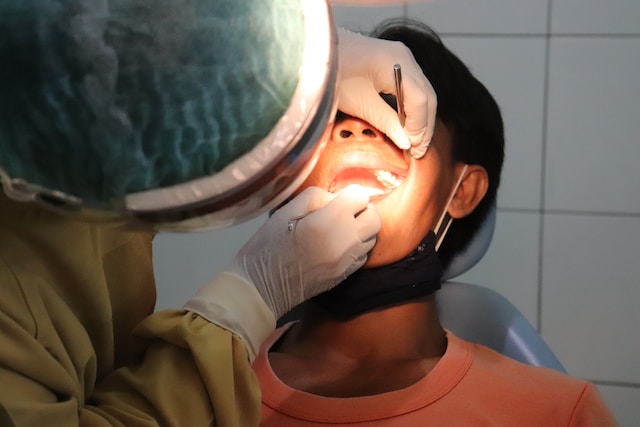What Does a Cavity Look Like?
Published Sep 3, 2023 | By Admin

Introduction
Oral health is an integral part of overall well-being, and maintaining healthy teeth is essential for a confident smile and effective chewing. However, dental problems such as cavities can occur and affect the integrity of our teeth. Cavities, also known as tooth decay, are a common dental problem that affects people of all ages. Recognizing the signs and symptoms of sinuses is essential for early intervention and effective treatment. In this article, we will look into the different aspects of sinuses, explore what they look like, and understand their visual indicators.
What is Cavity?
A cavity, also referred to as tooth decay, is a common dental condition characterized by the gradual breakdown of tooth structure. It occurs when bacteria in the mouth produce acids that erode the protective layers of the teeth, including the enamel, dentin, and sometimes the pulp. The process begins with the formation of small holes or holes in the enamel, which can expand over time if left untreated. Cavities can lead to a number of symptoms, including sensitivity, pain, discoloration and texture changes on the surface of the affected tooth. Proper oral hygiene practices, regular dental check-ups and a balanced diet are essential for preventing and dealing with tooth decay, ensuring the maintenance of healthy teeth and overall well-being of the oral cavity.

Cavity Anatomy
Before discussing the visual characteristics of cavities, it is important to understand their underlying causes and progression of decay. A cavity is essentially a hole that forms in a tooth as a result of the gradual destruction of tooth enamel, dentin and sometimes the pulp. This destruction is primarily caused by bacteria in the mouth that produce acids when they metabolize sugars and carbohydrates. These acids break down the protective layers of the tooth, leading to the formation of a cavity.
Early Signs of Cavities
Cavities do not develop overnight; they go through different stages before fully manifesting. In the initial stage, known as demineralization, the enamel begins to lose minerals due to the action of the acid. There may not be any visible signs during this stage, so it is crucial for individuals to pay attention to other symptoms such as sensitivity to hot or cold foods, discomfort when chewing, or the appearance of white spots on the surface of the tooth.
Formation of Discoloration
As the cavity progresses, there may be visible discoloration of the tooth. The affected area may appear slightly darker than the surrounding enamel. This discoloration can range from light brown to black, depending on the severity of the decay. Discoloration is often more noticeable on the biting surfaces of molars and premolars, where food particles and bacteria tend to accumulate.
Visible Holes and Pits
As decay progresses, the demineralized area of the tooth may begin to collapse, resulting in the formation of small holes or pits on the surface of the tooth. These holes can be seen as small dark holes on the affected tooth. They are a clear indicator that the enamel has been disturbed and that the decay has started.
Notable Texture Changes
In addition to visible holes, the texture of the affected tooth may also change. When you run your tongue over the tooth, you may notice rough or uneven areas. This is caused by erosion of the enamel and dentin, resulting in an uneven surface that can be distinguished from the smoother structure of healthy teeth.
Tenderness and Discomfort
As the cavity strengthens, it begins to approach the inner layers of the tooth, including the dentin and pulp. This can lead to increased sensitivity to hot, cold, sweet or sour stimuli. The nerve endings in the tooth are more exposed to external influences, resulting in discomfort or even sharp shooting pain.
Spreading Decay
If left untreated, cavities can continue to progress affecting larger parts of the tooth. At this point, decay can spread horizontally inside the tooth, undermining its structural integrity. This can lead to larger visible holes and a more pronounced change in the color and structure of the tooth.
Advanced Decomposition and Infection
In the most advanced stages of cavity development, decay can extend into the pulp chamber, which contains the nerve and blood vessels of the tooth. This can result in severe pain, swelling of the surrounding gums and even the formation of an abscess. An abscess is a pus-filled pocket caused by a bacterial infection that can be extremely painful and require immediate dental care.
What happens if a Cavity is not properly cared?
If a cavity is not properly cared for, it can lead to a number of escalating oral health problems and potentially affect overall well-being. Here are some of the consequences of neglecting cavity care:
Progression of caries
Cavities are caused by the gradual breakdown of tooth structure due to bacterial activity. If left untreated, the decay will continue to spread deeper into the tooth, affecting the dentin and potentially reaching the pulp chamber, which contains nerves and blood vessels. This can result in increased pain and discomfort.
Increased sensitivity and pain
As decay progresses, the tooth becomes more sensitive to temperature changes, especially to hot and cold foods and drinks. The nerve endings in the tooth become exposed, leading to increased discomfort and pain.
Risk of infection
The risk of infection increases significantly when the cavity enters the pulp chamber. Bacteria can enter the pulp, causing inflammation and infection, leading to severe pain, swelling, and the potential formation of an abscess a pus-filled pocket that can be extremely painful and requires immediate attention.
Spread of infection
If the infection is not treated immediately, it can spread to surrounding tissues, including the gums and jawbone. This can lead to more extensive and complex oral health problems that can lead to the loss of the affected tooth.
Tooth loss
If a cavity is not treated in the early stages, it can weaken the tooth structure to the point of irreversible damage. This can ultimately lead to the need for tooth extraction.
Conclusion
Recognizing the visual signs and symptoms of cavities is essential to maintaining good oral health. Regular dental checkups and good oral hygiene practices can help detect cavities in their early stages, preventing further decay and the need for extensive treatment. By understanding what cavities look like and the progressive nature of tooth decay, individuals can take proactive steps to protect their teeth and enjoy a healthy, confident smile for years to come.






